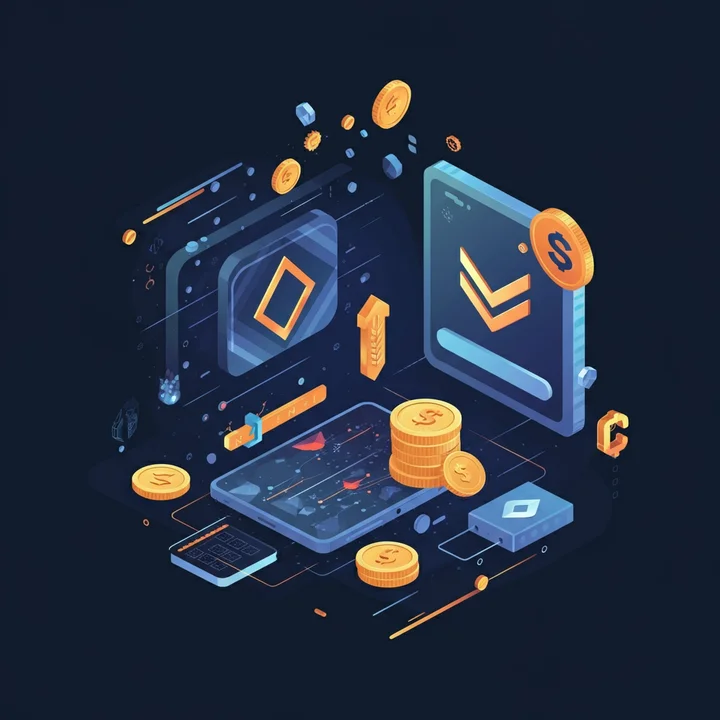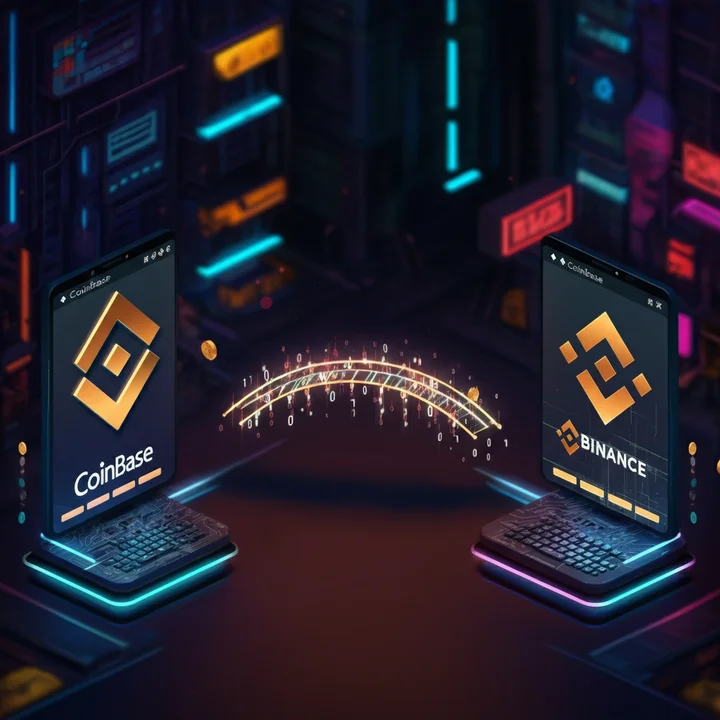Are you intrigued by decentralized finance (DeFi) but unsure how to safely interact with protocols like Uniswap, Aave, or other decentralized apps (dApps)? WalletConnect is here to help. This powerful open-source protocol acts as a bridge between your crypto wallet and DeFi platforms, making your transactions simple and secure.
This guide will walk you through connecting to a DeFi protocol using WalletConnect and help you perform tasks like swapping tokens or staking assets. Whether you're new to crypto or experienced in DeFi, you'll learn how to use WalletConnect with ease while keeping your assets safe.
What is WalletConnect?
WalletConnect is an open-source protocol designed to securely connect decentralized apps (dApps) with cryptocurrency wallets via QR code scanning or deep linking. It allows you to engage with dApps on your desktop or mobile without compromising security, as your private keys remain in the wallet and never shared with the platform.
Put simply, WalletConnect bridges the gap between your wallet and the DeFi world, ensuring secure transactions without the lengthy registration or login process.
Supported Wallets
Before you start, make sure you have a crypto wallet that works with WalletConnect. Here are a few popular options:
MetaMask: A browser extension and mobile wallet widely regarded for its versatility.
Trust Wallet: A mobile wallet offering support for a variety of cryptocurrencies and DeFi integrations.
Rainbow Wallet: Mobile-focused, perfect for Ethereum users.
Coinbase Wallet: A standalone option for users within the Coinbase ecosystem.
Argent, Zerion, and others: Many additional wallets are compatible, catering to different preferences and needs.
Ensure your chosen wallet is installed and set up before proceeding.
Connecting to a DeFi Protocol Using WalletConnect (Step-by-Step Guide)
1. Choose a dApp
The first step is to select a decentralized application (dApp) you wish to interact with. Some popular choices include:
Uniswap for token swaps
Aave for lending or borrowing assets
SushiSwap for liquidity farming
Yearn Finance for yield farming
Navigate to the dApp’s official website using your browser. Always ensure you’re accessing the legitimate URL to avoid phishing scams. For instance, use app.uniswap.org for Uniswap.
2. Open Your Wallet and Scan the QR Code
Once on the dApp’s website, look for the option to connect a wallet—often displayed as a "Connect Wallet" button at the top of the homepage. Follow these steps:
Click "Connect Wallet".
Select WalletConnect from the connection options.
A unique QR code will appear on your screen.
Open your wallet app (e.g., MetaMask or Trust Wallet) on your mobile device.
Locate the WalletConnect option within your wallet and tap Scan QR Code.
Point your phone’s camera at the QR code displayed on the dApp’s site.
3. Confirm Connection and Approve Permissions
After scanning the QR code, your wallet will prompt you to confirm the connection. Here’s what to do:
Review the details of the dApp requesting access, ensuring it’s what you expect.
Click Approve or Connect to establish the connection.
Remember, granting permission does not give the dApp access to your private keys or funds. It simply enables interaction with your wallet.
4. Perform a Simple Transaction
Once connected, you can begin interacting with the dApp. Let's try a simple token swap on Uniswap as an example:
Within Uniswap, select the tokens you want to swap from and swap to (e.g., ETH to USDC).
Enter the amount of the token you’re swapping. The platform will display the estimated amount you’ll receive after fees.
Confirm the details of your transaction.
Your wallet will open automatically to request approval. Review the gas fees and click Confirm.
The transaction will process and be recorded on the blockchain.
Congratulations! Your first DeFi transaction is complete.
5. Safely Disconnect Your Wallet
Disconnecting your wallet from the dApp when you're finished is a good security practice. Here’s how:
Locate the connected wallet section within the dApp (usually at the top-right corner).
Select Disconnect.
Open your wallet app and confirm that the active session has ended by checking the WalletConnect section.
Troubleshooting Common Issues
Encountering problems is not uncommon, especially if you're new to DeFi. Here are some troubleshooting tips:
QR Code Not Scanning: Ensure your camera is clean and functional, and that your wallet app is compatible with WalletConnect.
Connection Dropping Unexpectedly: Ensure you have a stable internet connection and try reconnecting from scratch.
Transaction Failure: This can happen due to low gas fees. Resubmit with higher gas fees.
If issues persist, consult your wallet provider’s FAQ section or community forums for additional help.
Security Tips When Using Third-Party dApps
Engaging with DeFi platforms comes with risks, especially if you’re new to the space. Follow these best practices to safeguard your funds:
Verify URLs: Double-check the authenticity of the dApp website to avoid phishing scams.
Limit Approvals: Grant permissions only for the specific amount you're transacting, not your entire balance.
Use Hardware Wallets: For larger transactions, consider connecting your wallet to a Ledger or Trezor hardware wallet.
Monitor Activity: Regularly review your wallet's transaction history for any suspicious activities.
Avoid Public Networks: Use a private and secure internet connection when transacting in DeFi.
Take Your First Step into DeFi with WalletConnect
Connecting to a DeFi protocol using WalletConnect might seem complex at first, but it simplifies secure interactions with dApps without compromising privacy. By following the steps above, you can start exploring the exciting world of decentralized finance and tap into opportunities like swaps, staking, and yield farming.
DeFi is revolutionizing finance, and now is the perfect time to become part of it. With WalletConnect and a little practice, you'll soon be managing your crypto assets with confidence.



